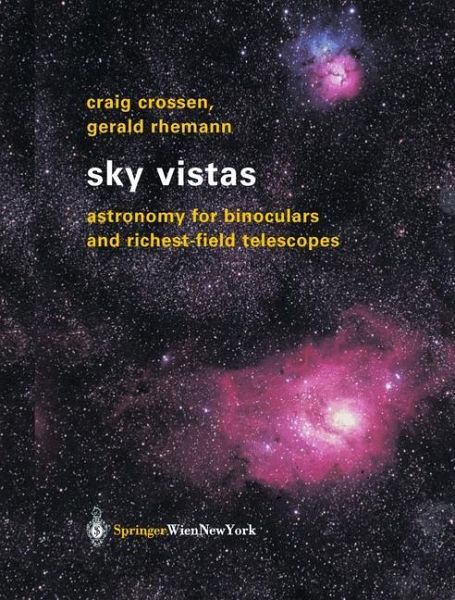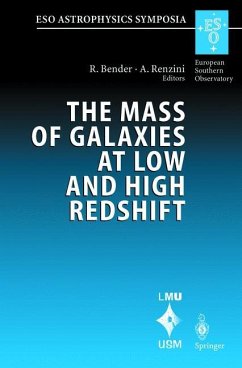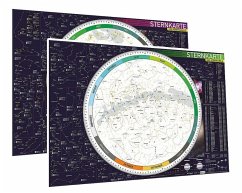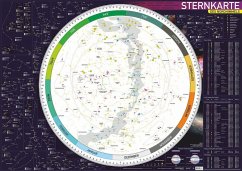
Sky Vistas
Astronomy for Binoculars and Richest-Field Telescopes

PAYBACK Punkte
58 °P sammeln!
This book is primarily a practical guide for observers with normal or giant binoculars, or "richest-field" telescopes, who wish to get the most out of their instruments. Apart from that, it is also a readable, well-illustrated book for "arm-chair observers".
The central point of interest is wide-field astronomy - areas of the night sky that are particularly rich in objects. The Milky Way itself is the ultimate "wide-field" object and therefore its general features and the regions rich in clusters and nebulae are described. A chapter on clusters emphasizes open clusters best viewed in binoculars followed by a chapter on large but faint nebulae invisible to standard telescopes but visible to binoculars. The last chapter deals with fields in which groups of bright galaxies can be seen.
The full-page color and black-and-white photos are one of the best features of this book and make it appealing to the general reader. The practical observer is shown exactly where objects are with respect to one another.
The central point of interest is wide-field astronomy - areas of the night sky that are particularly rich in objects. The Milky Way itself is the ultimate "wide-field" object and therefore its general features and the regions rich in clusters and nebulae are described. A chapter on clusters emphasizes open clusters best viewed in binoculars followed by a chapter on large but faint nebulae invisible to standard telescopes but visible to binoculars. The last chapter deals with fields in which groups of bright galaxies can be seen.
The full-page color and black-and-white photos are one of the best features of this book and make it appealing to the general reader. The practical observer is shown exactly where objects are with respect to one another.
galactic perspective." Much of the pleasure of Sky Vistas is an astronomy guidebook for both astronomical observing comes from "looking" with active and "armchair" observers. First, it is a practical observing guide to the deep-sky objects the mind as well as the eye. Thus Sky Vistas describes how the naked-eye appearance of the that are visible in low-power, wide-field instruments MilkyWay itselfrelates to the spiral structure of our like binoculars and richest-field telescopes (RFTs). Galaxy in the vicinity of the Sun, how the familiar Second, it is a reader's guide to how the familiar bright nebulae and open clusters are distributed bright nebulae and star clusters along the Milky Way "trace" the spiral arms in the Sun's vicinity, along our Milky Way Galaxy's spiral arms in the neighborhood of the Sun, and to how the brightest and how the eyepiece appearance ofindividual open clusters relates to their age and (as a consequence) galaxies are distributed with respect to our Milky to where they are with respect to the spiral arms. Way Galaxy and to the Local Galaxy Group of And galaxies are discussed in their actual physical which our Milky Way is a member. Not many observing guides have been written groupings, and their eyepiece appearances are expressly for binoculars and small richest-field tele related to their true structures.












